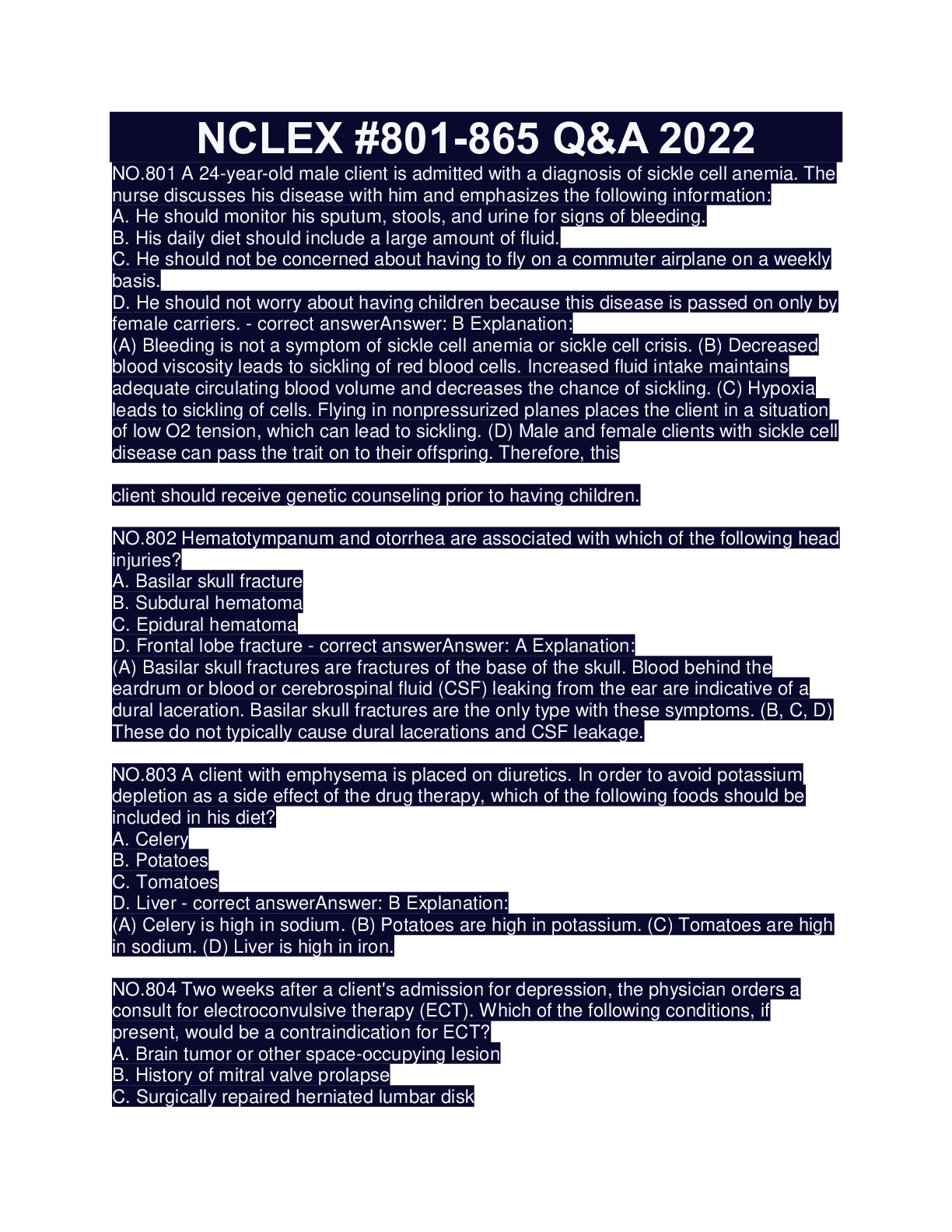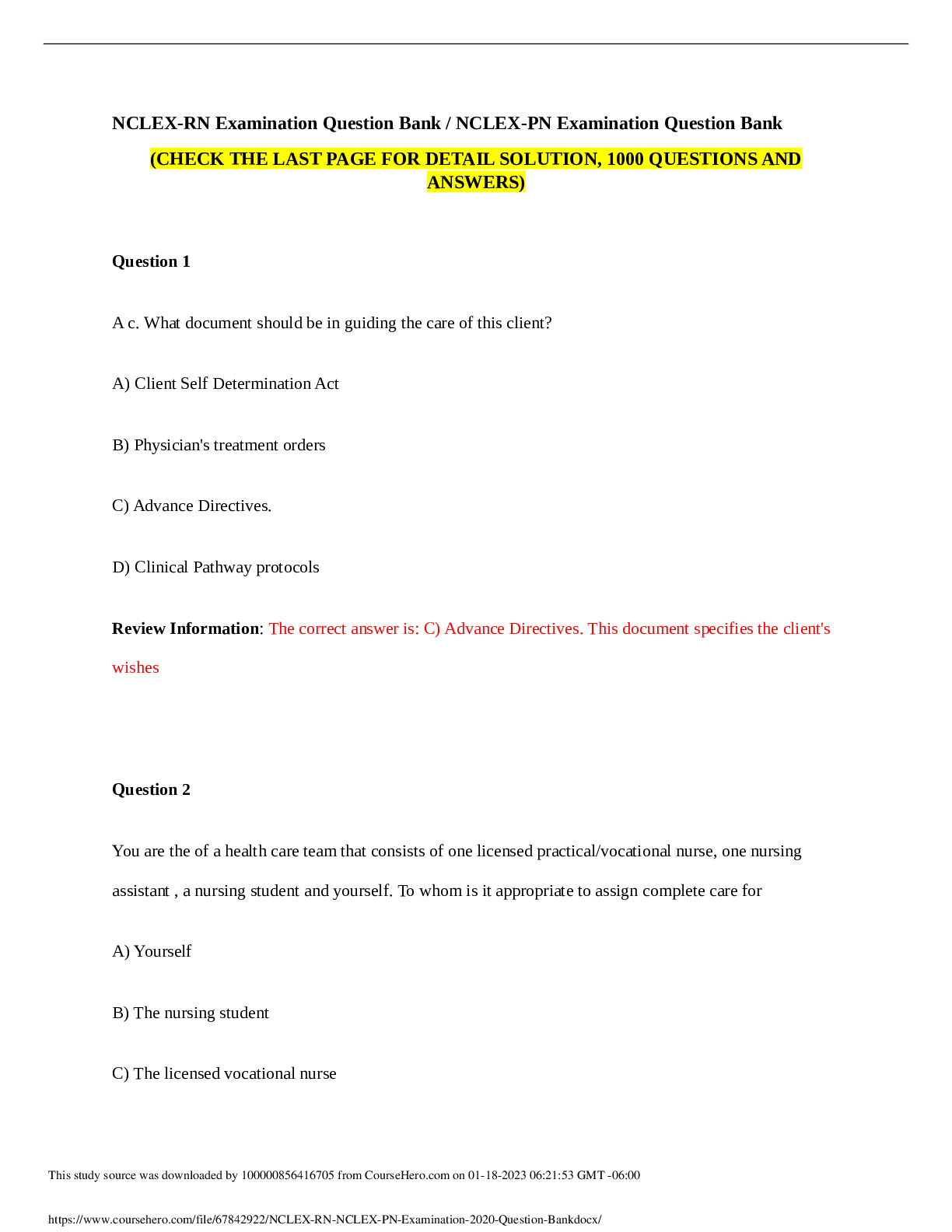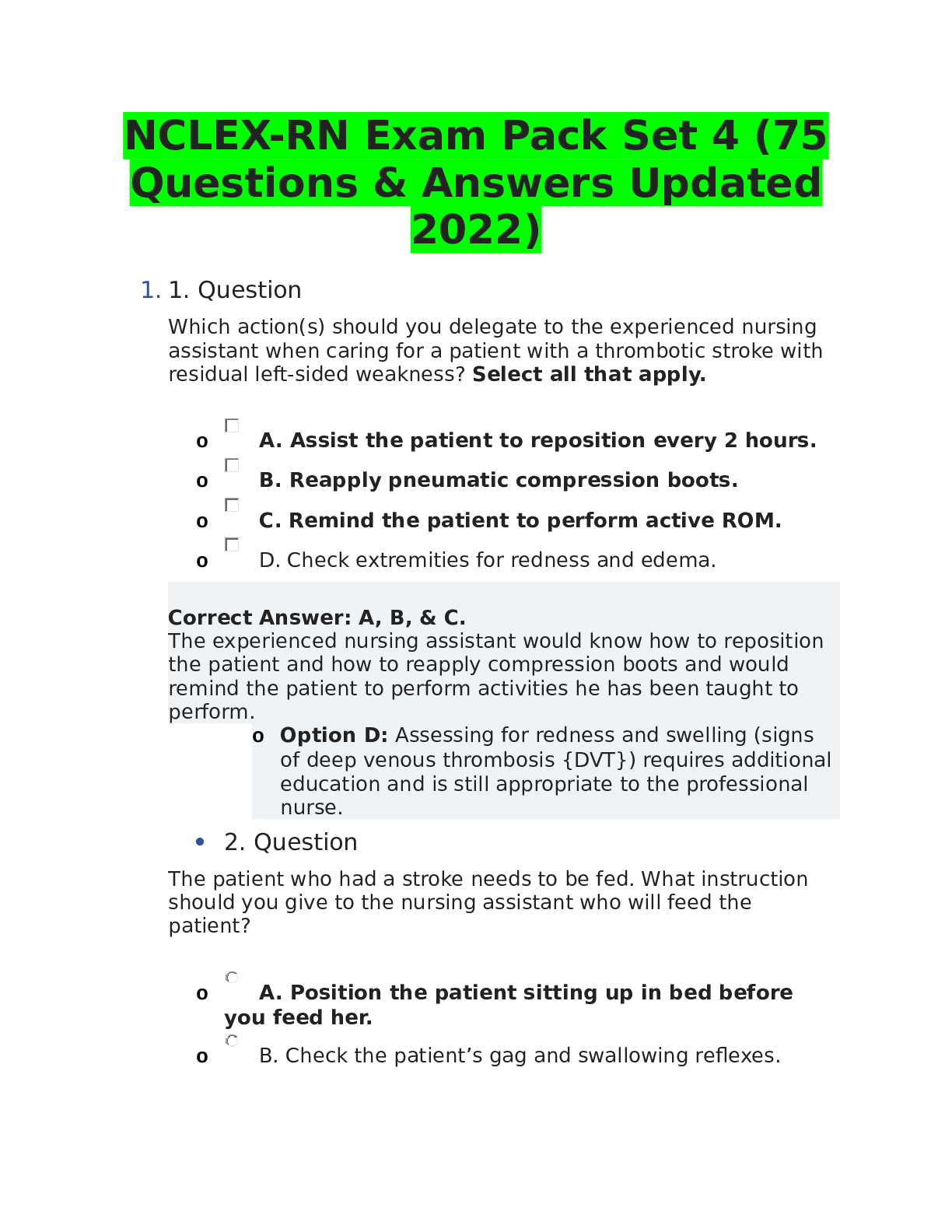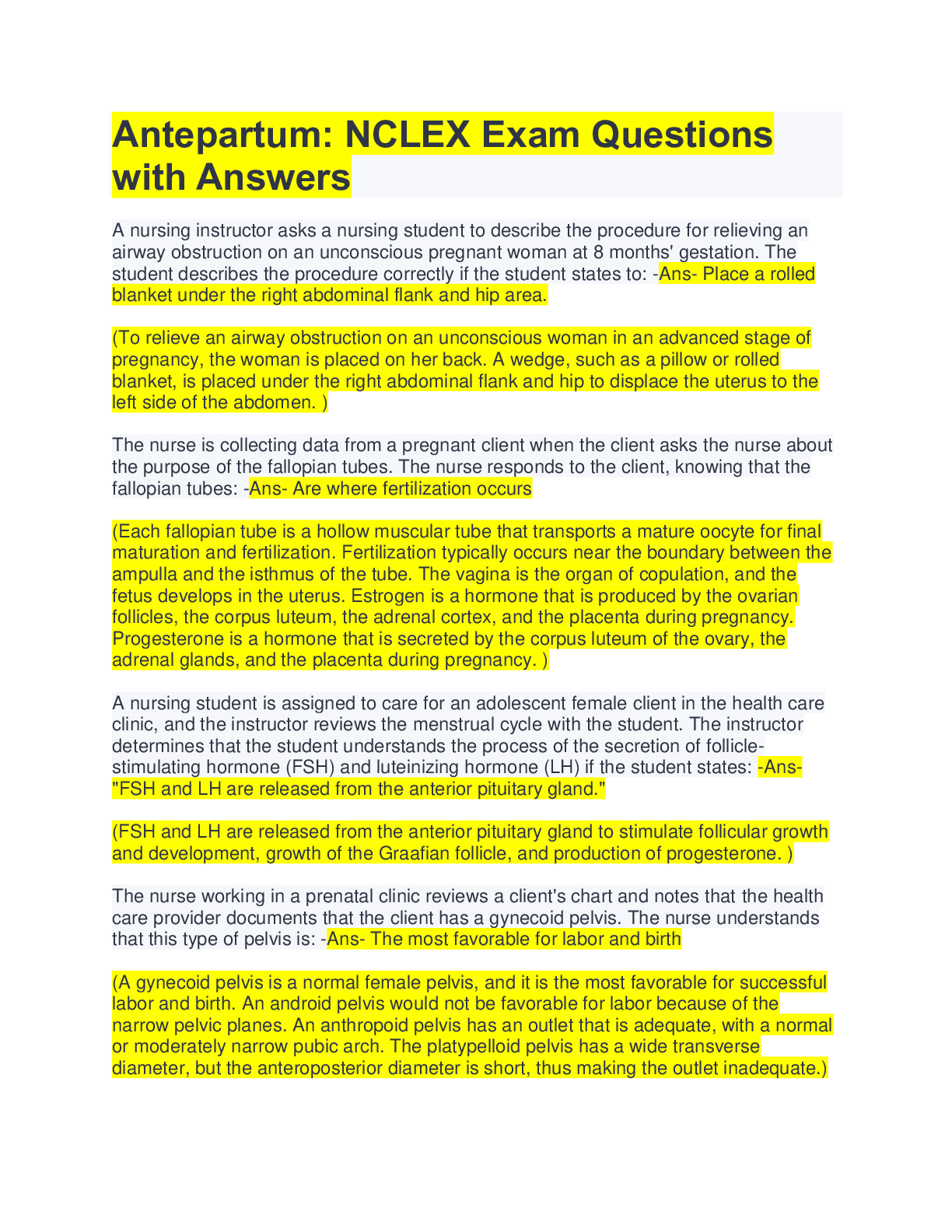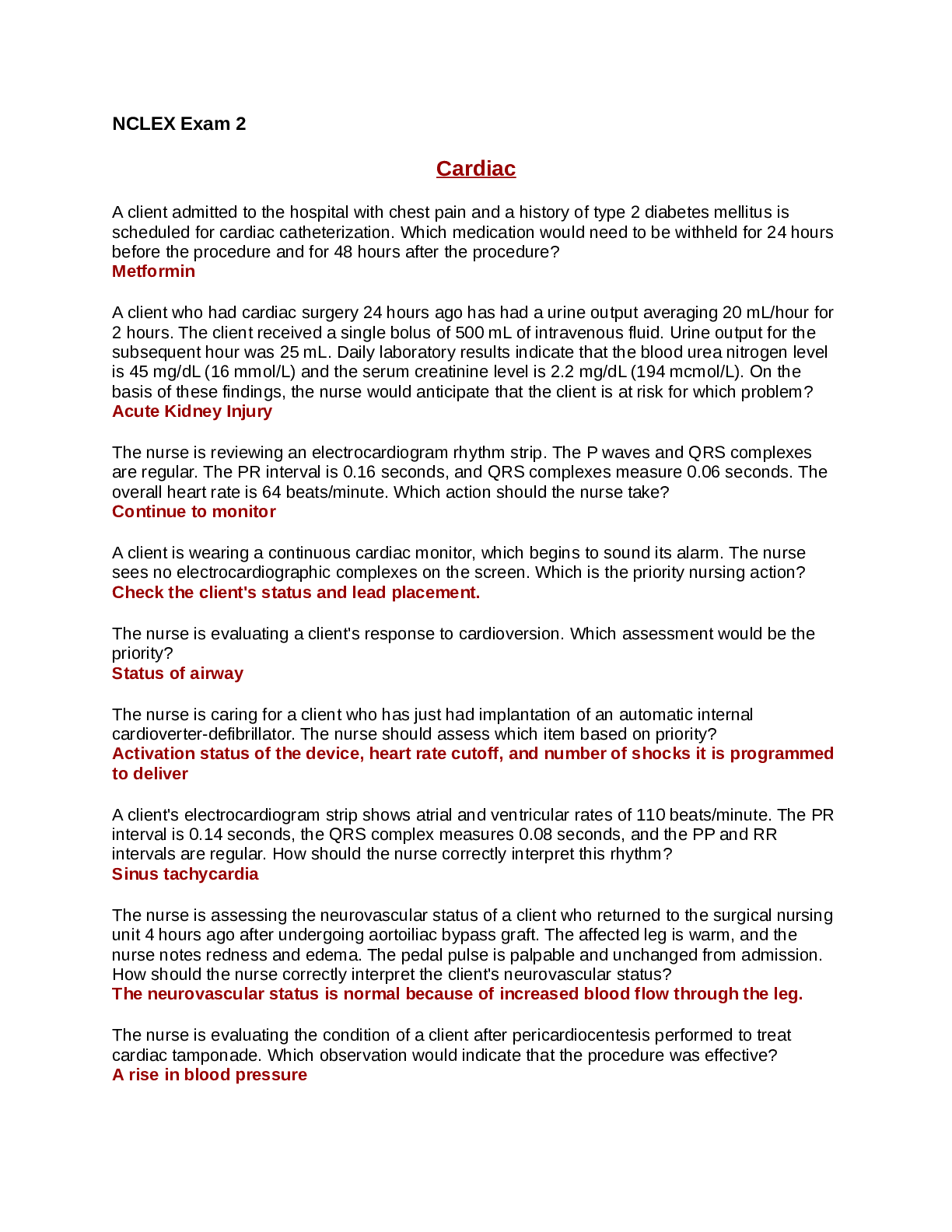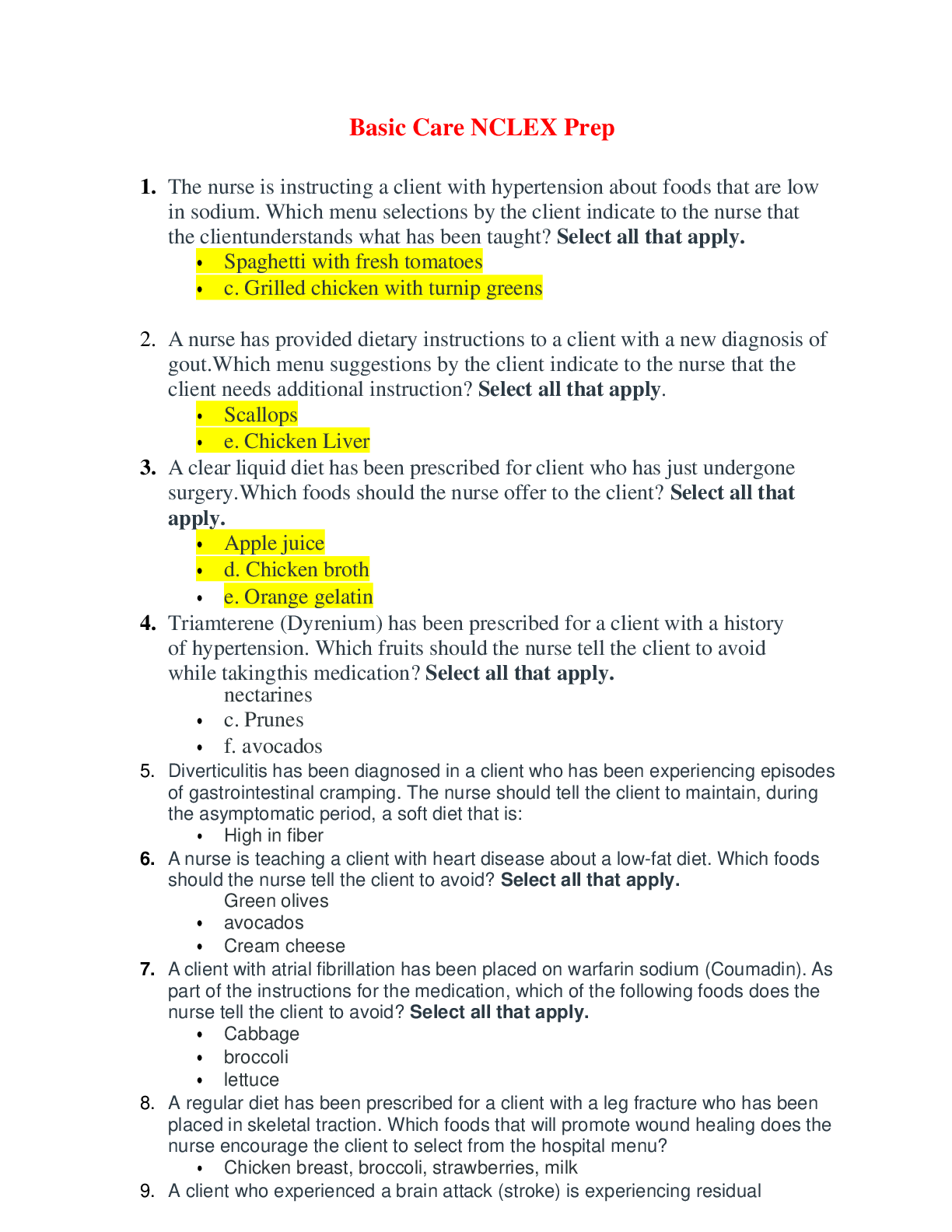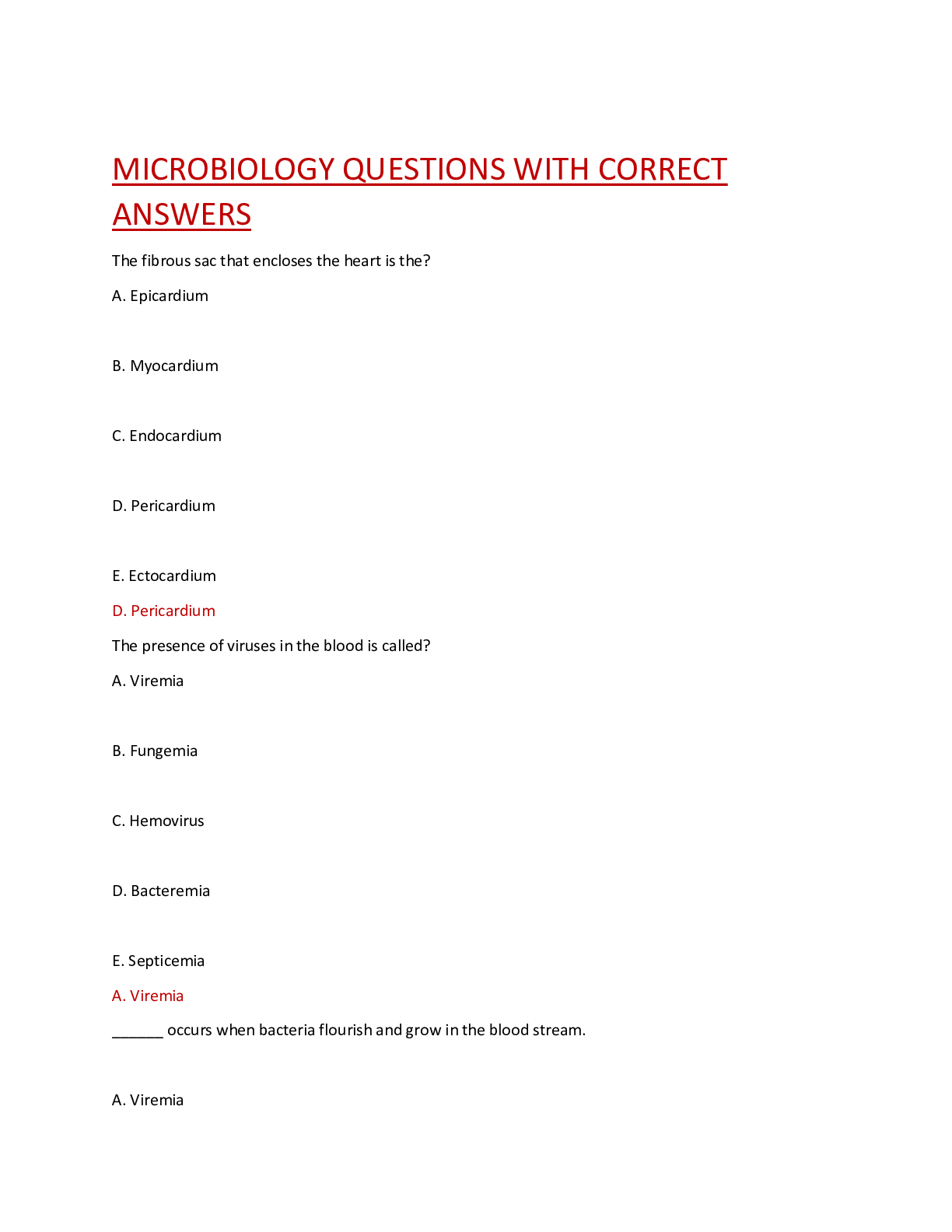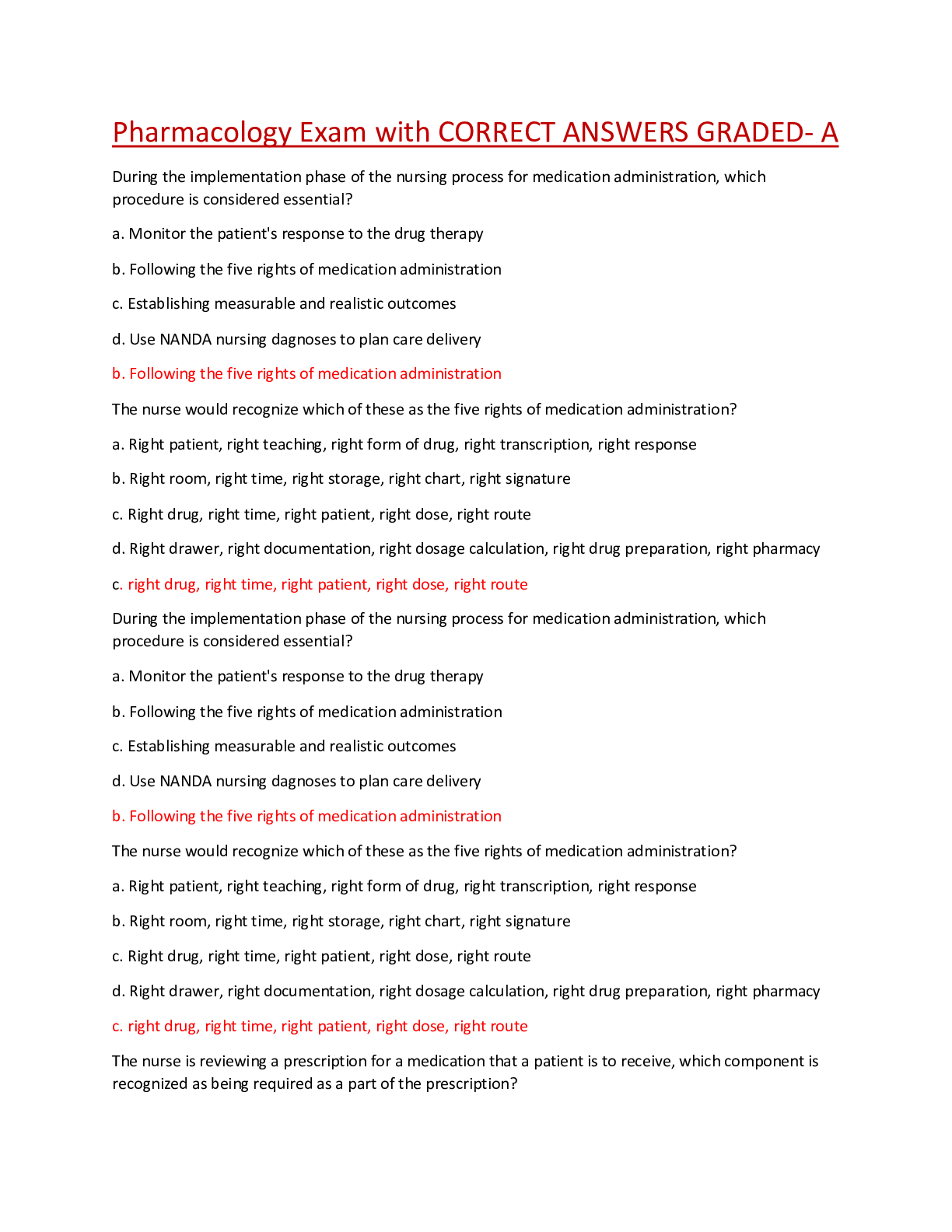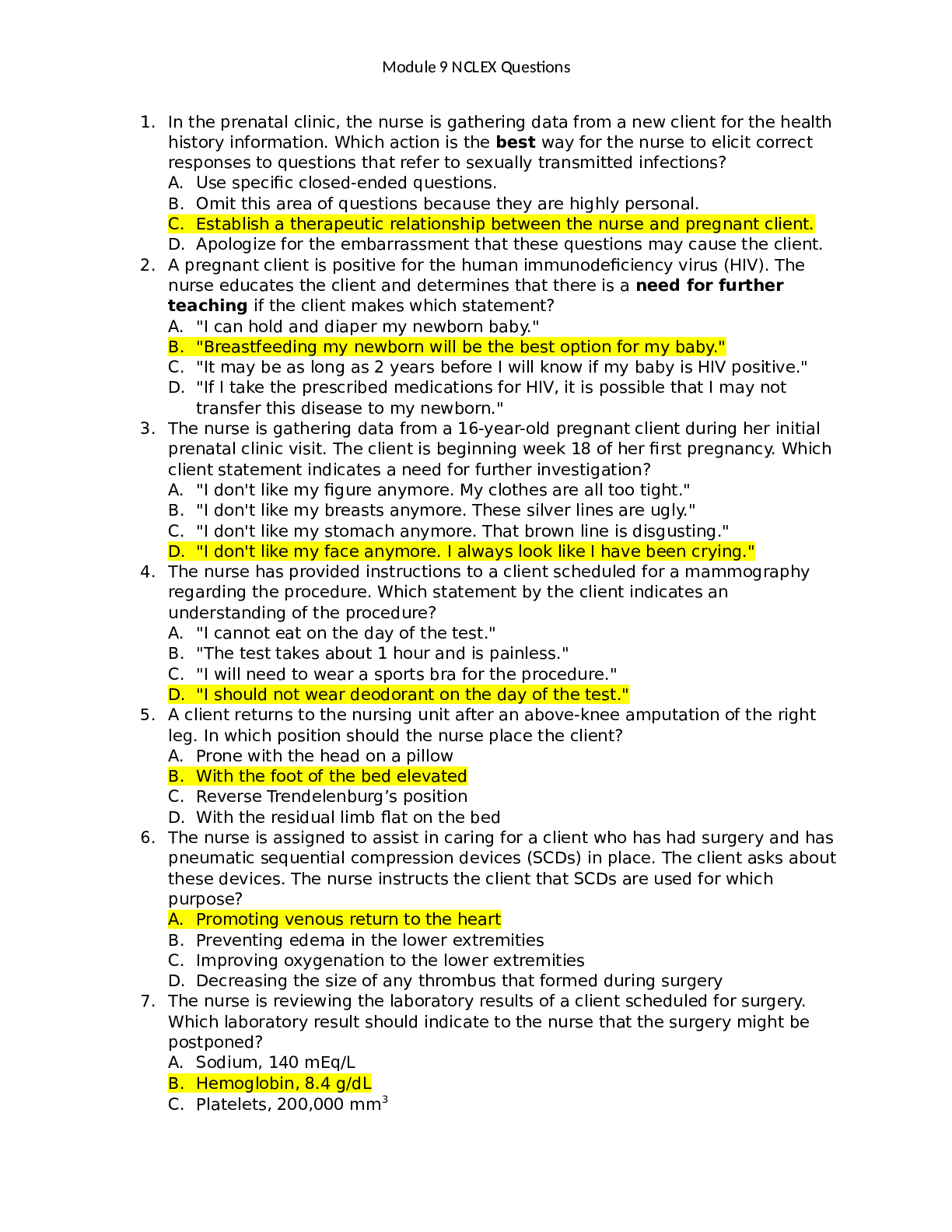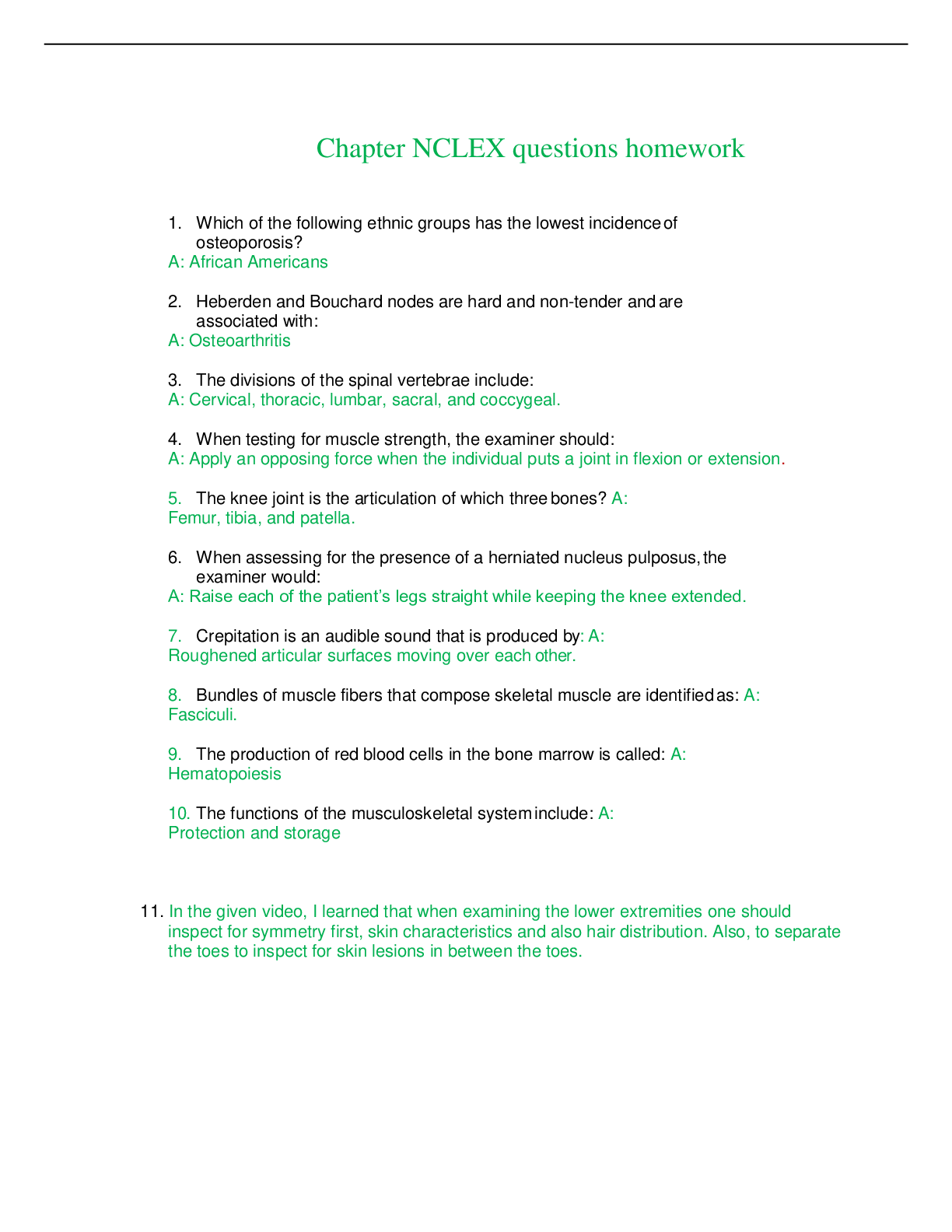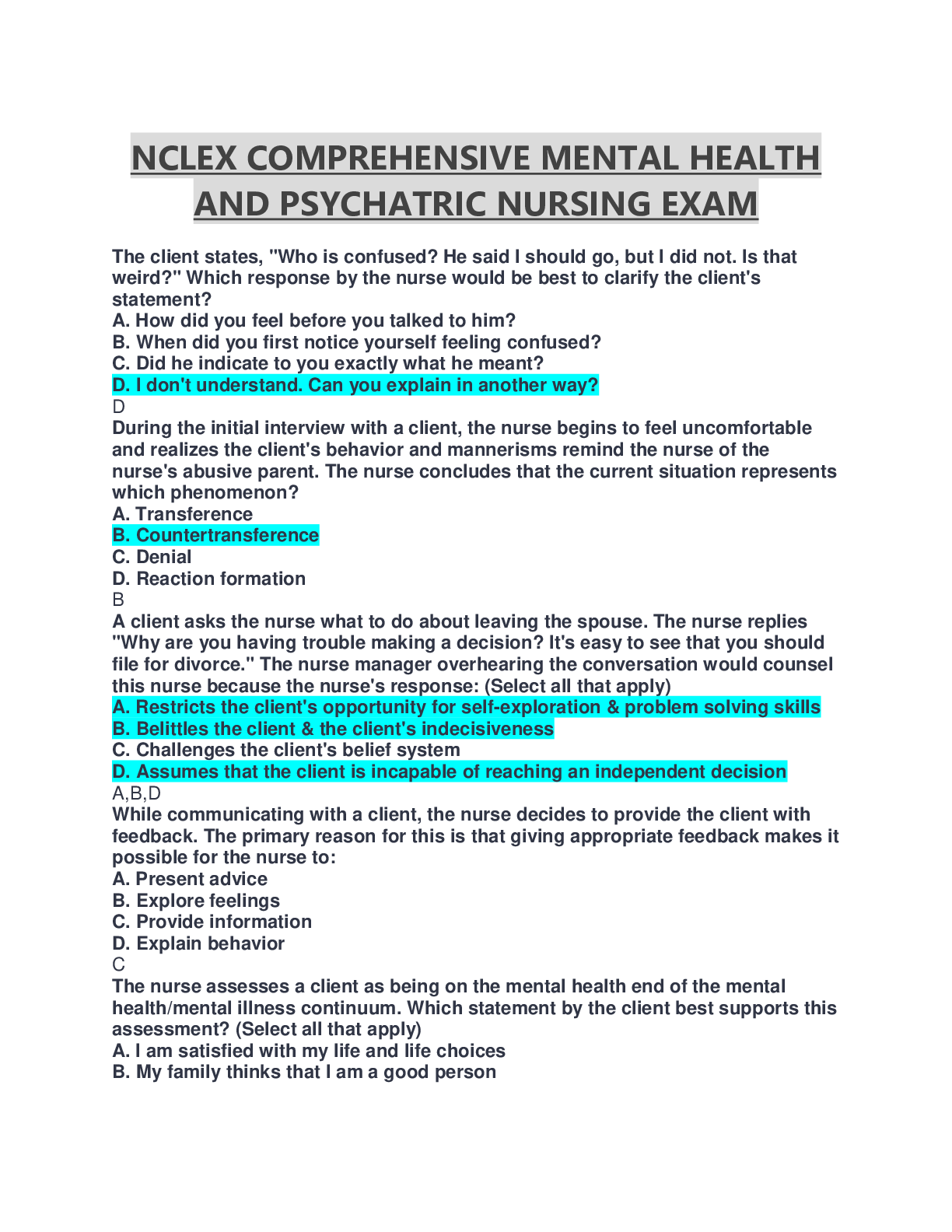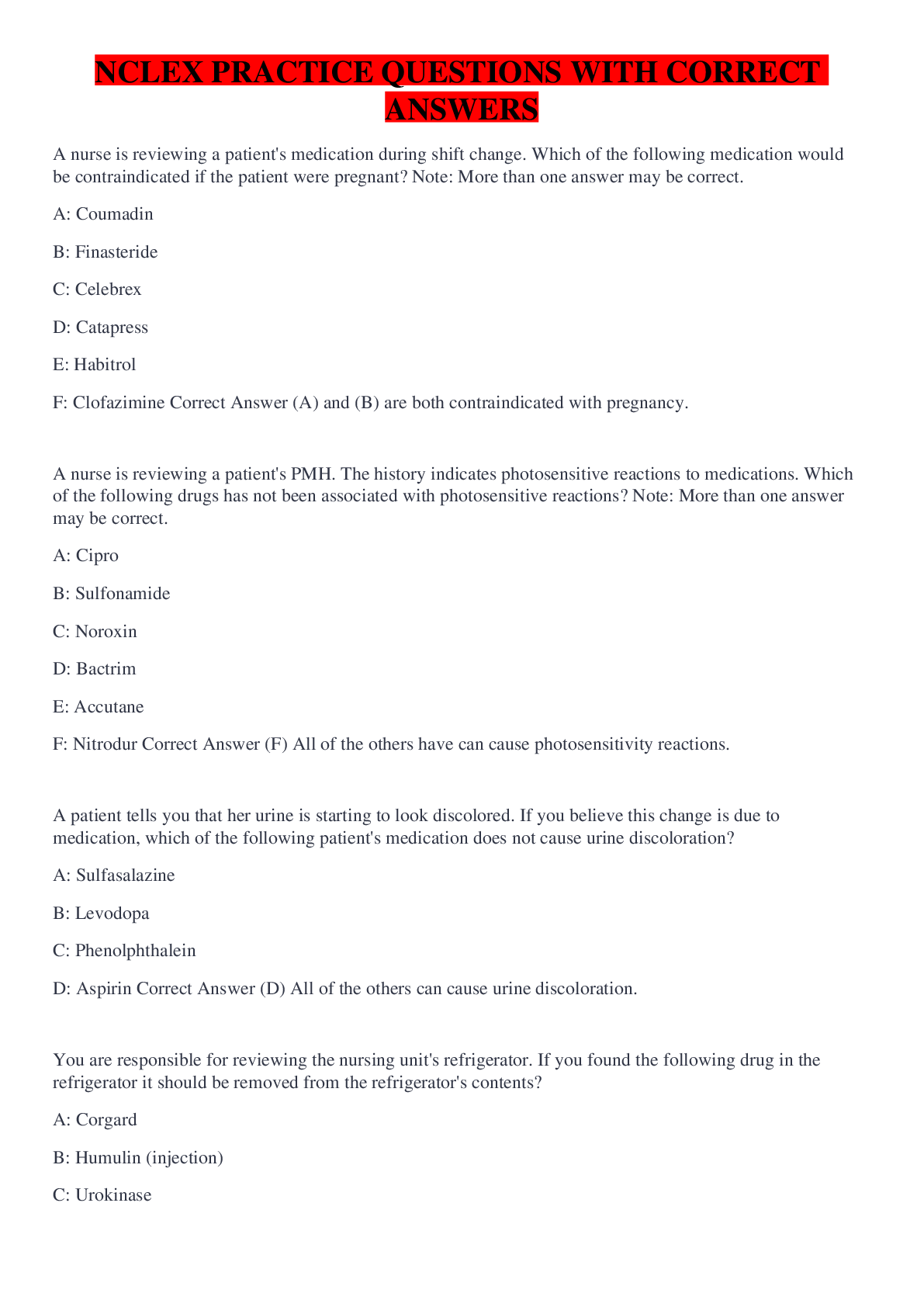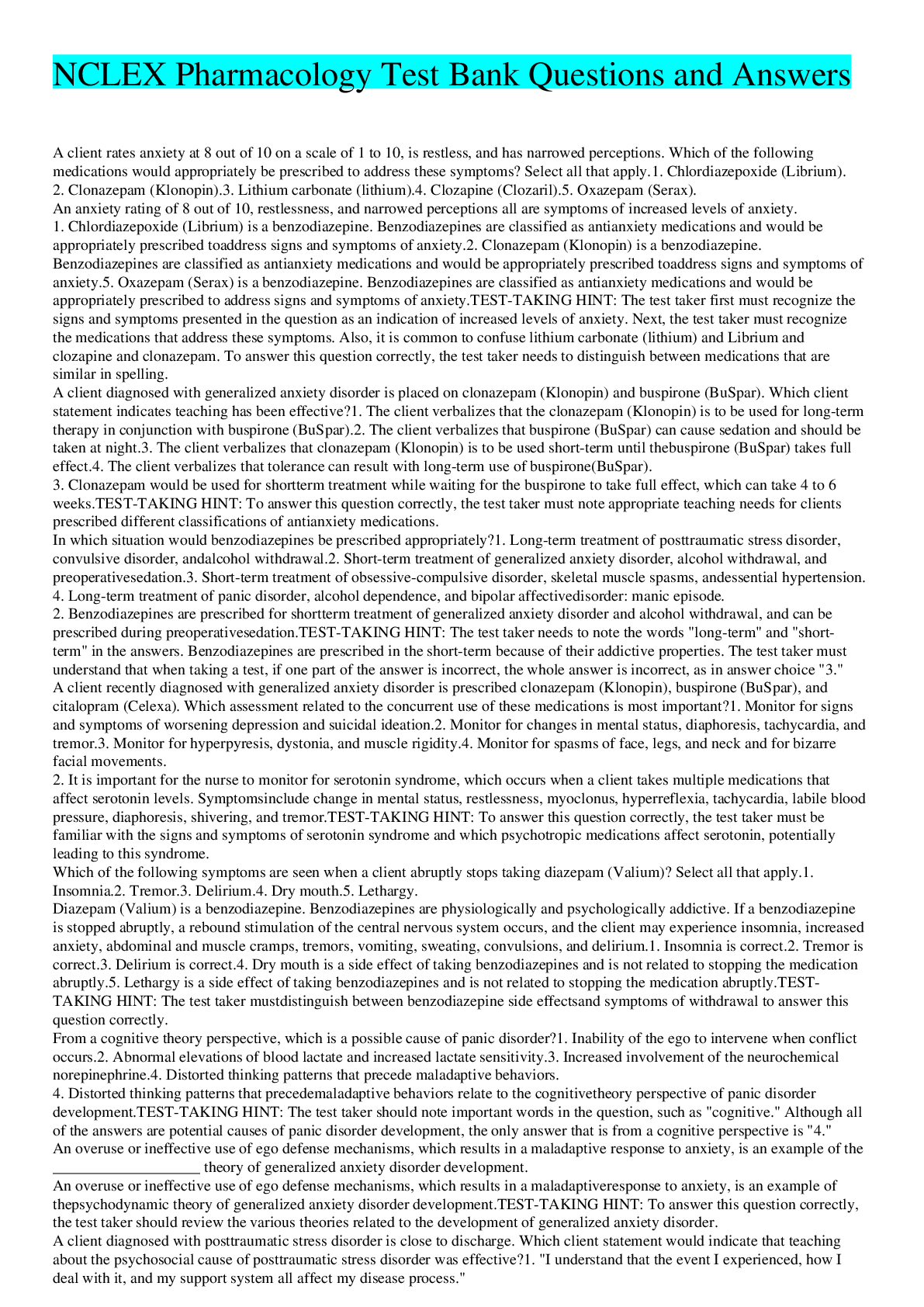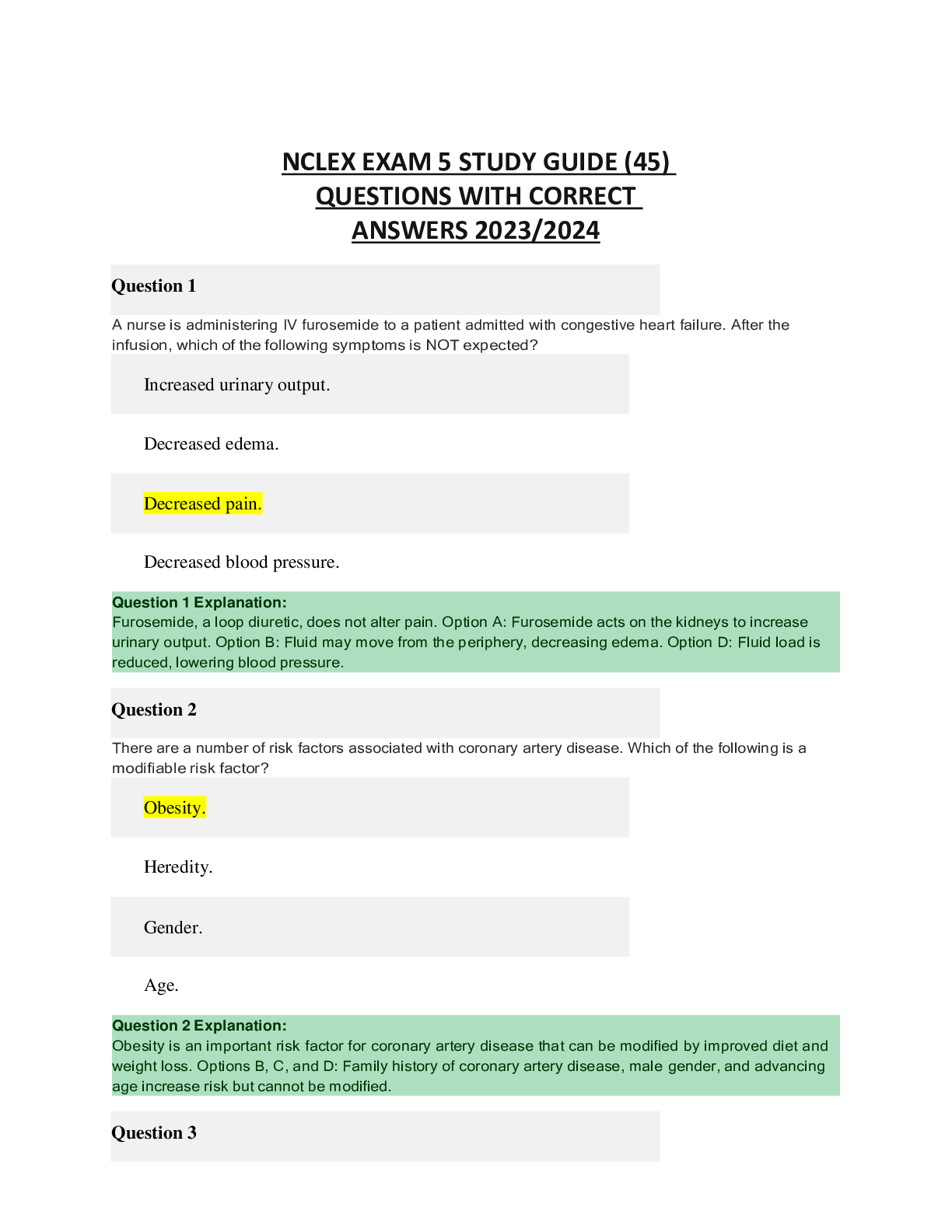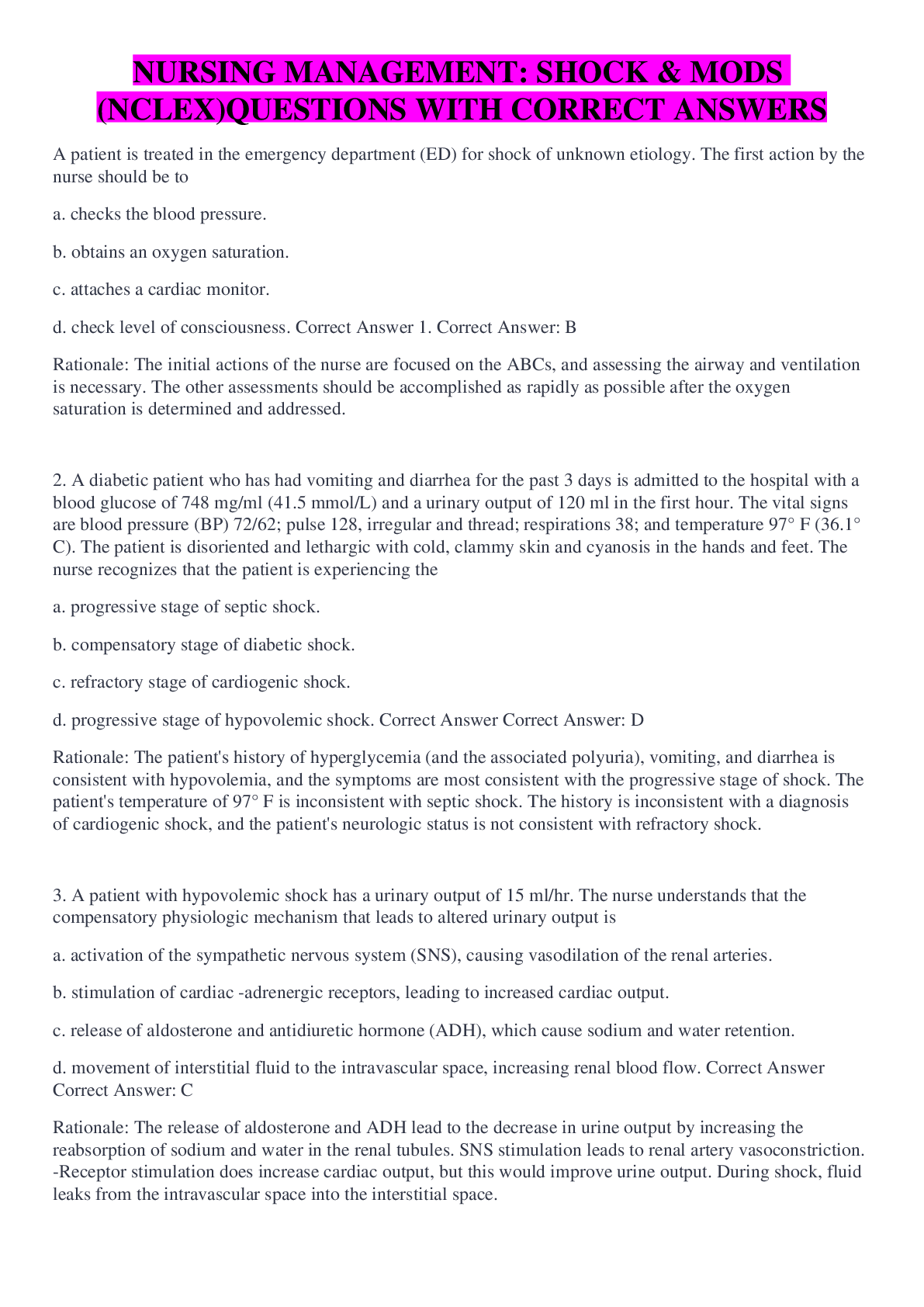*NURSING > NCLEX > Antepartum NCLEX Test Bank Questions with Correct Answers and Accurate Rationales (All)
Antepartum NCLEX Test Bank Questions with Correct Answers and Accurate Rationales
Document Content and Description Below
Antepartum NCLEX Test Bank Questions with Answers and Rationales A nurse is describing the process of fetal circulation to a client during a prenatal visit. The nurse accurately tells the client that... fetal circulation consists of: 1.Two umbilical veins and one umbilical artery 2.Two umbilical arteries and one umbilical vein 3.Arteries carrying oxygenated blood to the fetus 4.Veins carrying deoxygenated blood to the fetus - 2. Blood pumped by the embryo's heart leaves the embryo through two umbilical arteries. Once oxygenated, the blood then is returned by one umbilical vein. Arteries carry deoxygenated blood and waste products from the fetus, and veins carry oxygenated blood and provide oxygen and nutrients to the fetus. The nurse is performing an initial assessment on a client who has just been told that a pregnancy test is positive. Which assessment finding indicates that the client is at risk for preterm labor? 1. The client is a 35-year-old primigravida 2. The client has a history of cardiac disease 3. The client's hemoglobin level is 13.5 g/dL 4. The client is a 20-year-old primigravida of average weight and height - 2. The client has a history of cardiac disease Preterm labor occurs after the twentieth week but before the thirty-seventh week of gestation. Several factors are associated with preterm labor, including a history of medical conditions, present and past obstetric problems, social and environmental factors, and substance abuse. Other risk factors include a multifetal pregnancy, which contributes to overdistention of the uterus; anemia, which decreases oxygen supply to the uterus; and age younger than 18 years or first pregnancy at age older than 40 years. A nurse is assessing a woman in the second trimester of pregnancy who was admitted to the maternity unit with a suspected diagnosis of abruptio placentae. Which finding would the nurse expect to note if abruptio placentae is present? 1. Soft uterus 2. Abdominal pain 3. Nontender uterus 4. Painless vaginal bleeding - 2. Abdominal pain Classic signs and symptoms of abruptio placentae include vaginal bleeding, abdominal pain, and uterine tenderness and contractions. Mild to severe uterine hypertonicity is present. Pain is mild to severe and either localized or diffuse over one region of the uterus, with a board-like abdomen. Painless vaginal bleeding and a soft, nontender uterus in the second or third trimester of pregnancy are signs of placenta previa. The nurse provides instructions to a malnourished pregnant client regarding iron supplementation. Which client statement indicates an understanding of the instructions? 1. "Iron supplements will give me diarrhea." 2. "Meat does not provide iron and should be avoided." 3. "The iron is best absorbed if taken on an empty stomach." 4. "On the days that I eat green leafy vegetables or calf liver I can omit taking the iron supplement." - 3. "The iron is best absorbed if taken on an empty stomach." Iron is needed to allow for transfer of adequate iron to the fetus and to permit expansion of the maternal red blood cell mass. During pregnancy, the relative excess of plasma causes a decrease in the hemoglobin concentration and hematocrit, known as physiological anemia of pregnancy. This is a normal adaptation during pregnancy. Iron is best absorbed if taken on an empty stomach with water or a vitamin C containing juice. Iron supplements usually cause constipation. Meats are an excellent source of iron. The client needs to take the iron supplements regardless of food intake. A pregnant client is seen in the health care clinic. During the prenatal visit, the client informs the nurse that she is experiencing pain in her calf when she walks. Which is the most appropriate nursing action? 1. Instruct the client to avoid walking. 2. Assess for signs of venous thrombosis. 3. Instruct to elevate the legs throughout the day. 4. Tell the client that this is normal during pregnancy. - 2. Assess for signs of venous thrombosis. If a woman complains of calf pain during walking, it could be an indication of venous thrombosis of the lower extremities. The most appropriate nursing action would be to check for the presence of additional signs of venous thrombosis. It is not appropriate to tell the mother that this is normal during pregnancy. Ambulation is a necessary exercise, and the woman should be encouraged to ambulate during pregnancy. Although it is important to elevate the legs during pregnancy, elevating the legs consistently is not the most appropriate nursing action.v [Show More]
Last updated: 1 year ago
Preview 1 out of 109 pages

Reviews( 0 )
Document information
Connected school, study & course
About the document
Uploaded On
Oct 02, 2022
Number of pages
109
Written in
Additional information
This document has been written for:
Uploaded
Oct 02, 2022
Downloads
0
Views
60

